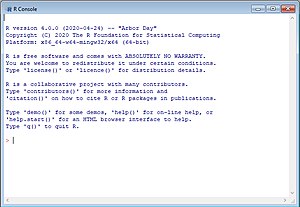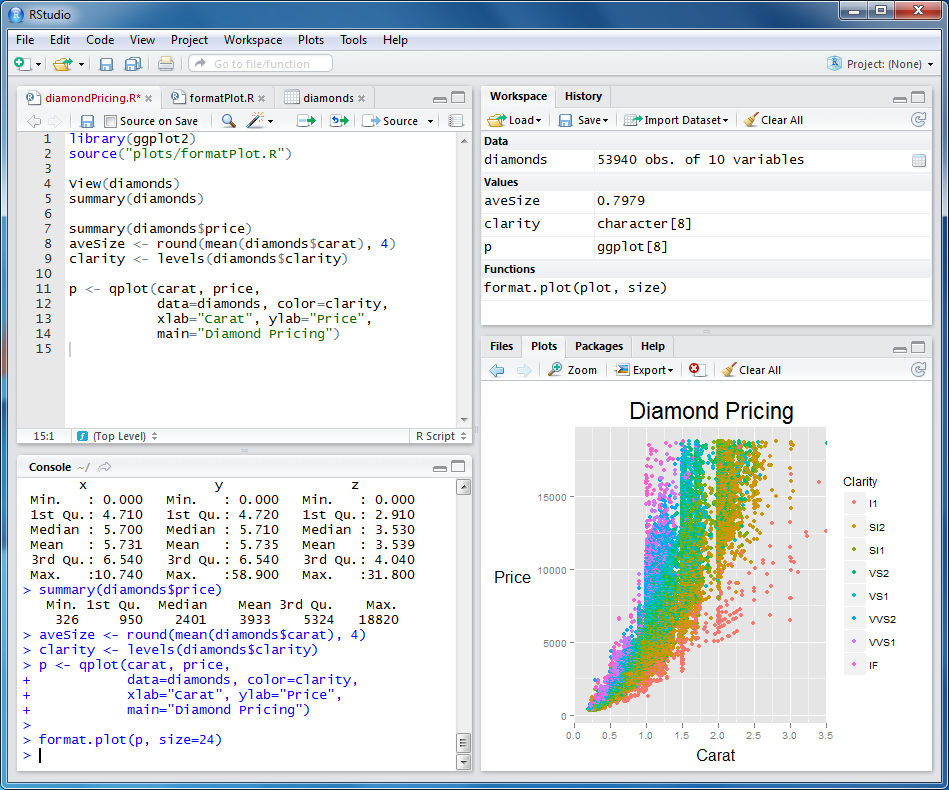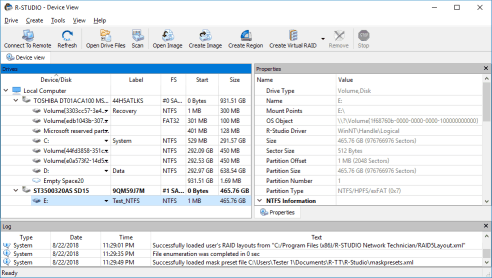To Install R
- RStudio is a set of integrated tools designed to help you be more productive with R. It includes a console, syntax-highlighting editor that supports direct code execution, and a variety of robust tools for plotting, viewing history, debugging and managing your workspace.
- Software - Anything software-related r/ software. Hot New Top Rising. Card classic compact. Posted by 4 hours ago. Looking for software. In Search for a Background Music Player. Hey everyone, I'm looking to fill in those quiet parts of my workday. I wanted to see if there was a software.
- Open an internet browser and go to www.r-project.org.
- Click the 'download R' link in the middle of the page under 'Getting Started.'
- Select a CRAN location (a mirror site) and click the corresponding link.
- Click on the 'Download R for (Mac) OS X' link at the top of the page.
- Click on the file containing the latest version of R under 'Files.'
- Save the .pkg file, double-click it to open, and follow the installation instructions.
- Now that R is installed, you need to download and install RStudio.
To Install RStudio

- Go to www.rstudio.com and click on the 'Download RStudio' button.
- Click on 'Download RStudio Desktop.'
- Click on the version recommended for your system, or the latest Mac version, save the .dmg file on your computer, double-click it to open, and then drag and drop it to your applications folder.
Survey Software - The Survey System Software for Web Surveys, PDA Surveys, Phone Questionnaires, etc. The Survey System is the most complete survey software package available for all types of questionnaires and research projects from web, phone, PDA, or paper questionnaires.

To Install the SDSFoundations Package
- Download SDSFoundations to your desktop (make sure it has the '.tgz' extension).
- Open RStudio.
- Click on the Packages tab in the bottom right window.
- Click 'Install.'
- Select install from 'Package Archive File.'
- Select the SDSFoundations package file from your desktop.
- Click install. You are done! You can now delete the SDSpackage file from your desktop.
To Install R:
- Open an internet browser and go to www.r-project.org.
- Click the 'download R' link in the middle of the page under 'Getting Started.'
- Select a CRAN location (a mirror site) and click the corresponding link.
- Click on the 'Download R for Windows' link at the top of the page.
- Click on the 'install R for the first time' link at the top of the page.
- Click 'Download R for Windows' and save the executable file somewhere on your computer. Run the .exe file and follow the installation instructions.
- Now that R is installed, you need to download and install RStudio.
To Install RStudio
- Go to www.rstudio.com and click on the 'Download RStudio' button.
- Click on 'Download RStudio Desktop.'
- Click on the version recommended for your system, or the latest Windows version, and save the executable file. Run the .exe file and follow the installation instructions.
To Install the SDSFoundations Package
- Download SDSFoundationsto your desktop (make sure it has the '.zip' extension).
- Open RStudio.
- Click on the Packages tab in the bottom right window.
- Click 'Install.'
- Select install from 'Package Archive File.'
- Select the SDSFoundations package file from your desktop.
- Click install. You are done! You can now delete the SDSpackage file from your desktop.
Introduction to R
R is a language and environment for statistical computing and graphics. It is a GNU project which is similar to the S language and environment which was developed at Bell Laboratories (formerly AT&T, now Lucent Technologies) by John Chambers and colleagues. R can be considered as a different implementation of S. There are some important differences, but much code written for S runs unaltered under R.

R provides a wide variety of statistical (linear and nonlinear modelling, classical statistical tests, time-series analysis, classification, clustering, …) and graphical techniques, and is highly extensible. The S language is often the vehicle of choice for research in statistical methodology, and R provides an Open Source route to participation in that activity.
One of R’s strengths is the ease with which well-designed publication-quality plots can be produced, including mathematical symbols and formulae where needed. Great care has been taken over the defaults for the minor design choices in graphics, but the user retains full control.
R is available as Free Software under the terms of the Free Software Foundation’s GNU General Public License in source code form. It compiles and runs on a wide variety of UNIX platforms and similar systems (including FreeBSD and Linux), Windows and MacOS.
The R environment
R is an integrated suite of software facilities for data manipulation, calculation and graphical display. It includes
R Software Tutorial

- an effective data handling and storage facility,
- a suite of operators for calculations on arrays, in particular matrices,
- a large, coherent, integrated collection of intermediate tools for data analysis,
- graphical facilities for data analysis and display either on-screen or on hardcopy, and
- a well-developed, simple and effective programming language which includes conditionals, loops, user-defined recursive functions and input and output facilities.
The term “environment” is intended to characterize it as a fully planned and coherent system, rather than an incremental accretion of very specific and inflexible tools, as is frequently the case with other data analysis software.
R, like S, is designed around a true computer language, and it allows users to add additional functionality by defining new functions. Much of the system is itself written in the R dialect of S, which makes it easy for users to follow the algorithmic choices made. For computationally-intensive tasks, C, C++ and Fortran code can be linked and called at run time. Electro voice microphone serial numbers. Advanced users can write C code to manipulate R objects directly.
R Software Pdf
Many users think of R as a statistics system. We prefer to think of it as an environment within which statistical techniques are implemented. R can be extended (easily) via packages. There are about eight packages supplied with the R distribution and many more are available through the CRAN family of Internet sites covering a very wide range of modern statistics.
R Studio Software
R has its own LaTeX-like documentation format, which is used to supply comprehensive documentation, both on-line in a number of formats and in hardcopy.
